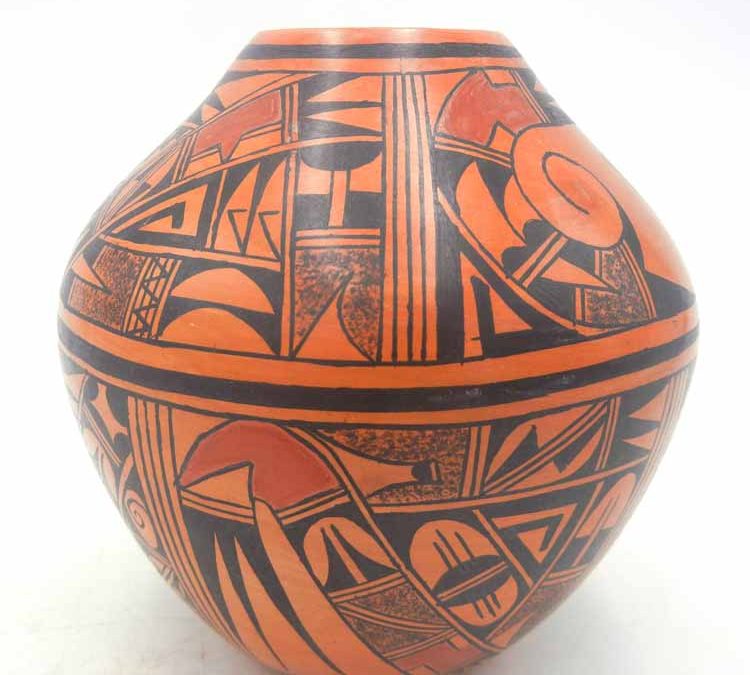While many people commonly associate pottery from the southwestern United States with the widely recognized Acoma Pueblo or the People of Zuni, the reality is that pottery has been central to Pueblo life for centuries. To really appreciate the rich culture and history of pueblo pottery, it’s important to understand just how far back the pueblo pottery tradition of the southwestern United States dates and learn more about the pottery traditions that modern-day practices are based on.
Mogollon Peoples
Some of the earliest pottery in the southwestern United States region is attributed to the Mogollon Peoples. The Mogollon inhabited an area that encompasses modern-day southeastern Arizona, southwestern New Mexico, and some areas of northern Mexico and Texas. In the mid-3rd century CE, the Mogollon People developed brown ware pottery firing practices which are simple in form but which persisted for thousands of years as a foundational pottery firing practice.
Hohokam Peoples
The Hohokam Peoples traditionally occupied territory is located in modern-day south-central Arizona down to northern Mexico. While the Mogollon Peoples were said to be the first in the area to develop firing practices, the Hohokam were thought to be the first to apply paint to the pottery sometime in the 5th century CE. Patterns were created using red iron-oxide pigments and were painted on clay in repetitive patterns.
Kayenta Region
In 1100 and 1200 CE, the rise of black-on-red pottery ware came into fashion and can be seen throughout the Kayenta Region of northern Arizona. Previously, black-on-white pottery had been particularly popular, but with the mass migration in the region and the recession of major population centers like Chaco and Mesa Verde, the black-on-red pottery styles of the Salado, Sinagua, and Mogollon became much more prominent. Some of the earliest records of polychrome design were created during this time, and this laid the foundation for the resurgence of polychrome techniques in the 19th century, which remain widely identifiable to this day.
Hopi Peoples
In what is now modern-day Arizona, the Hopi Peoples remain stewards on some of the oldest continually occupied lands in North America. This region is home to a historical village occupied from the 14th to the 17th century called Sikyátki, where many well-preserved pieces of Hopi Pueblo pottery have been found. This historical pottery is widely recognized for its beautiful polychrome style. It is credited as the inspiration for the famous Hopi artist Nampeyo, who helped spur the revival of traditional Hopi techniques and decorative patterns.
If you’re looking to find a beautiful piece of authentic pueblo pottery to add to your collection, come see all of the incredible options we have at Palms Trading Company. Our professional staff will work with you to ensure you find the perfect piece for your home while also ensuring you have all of the rich cultural and historical knowledge your new piece of pottery represents. Get in touch to find your very own authentic piece of pueblo pottery today!



